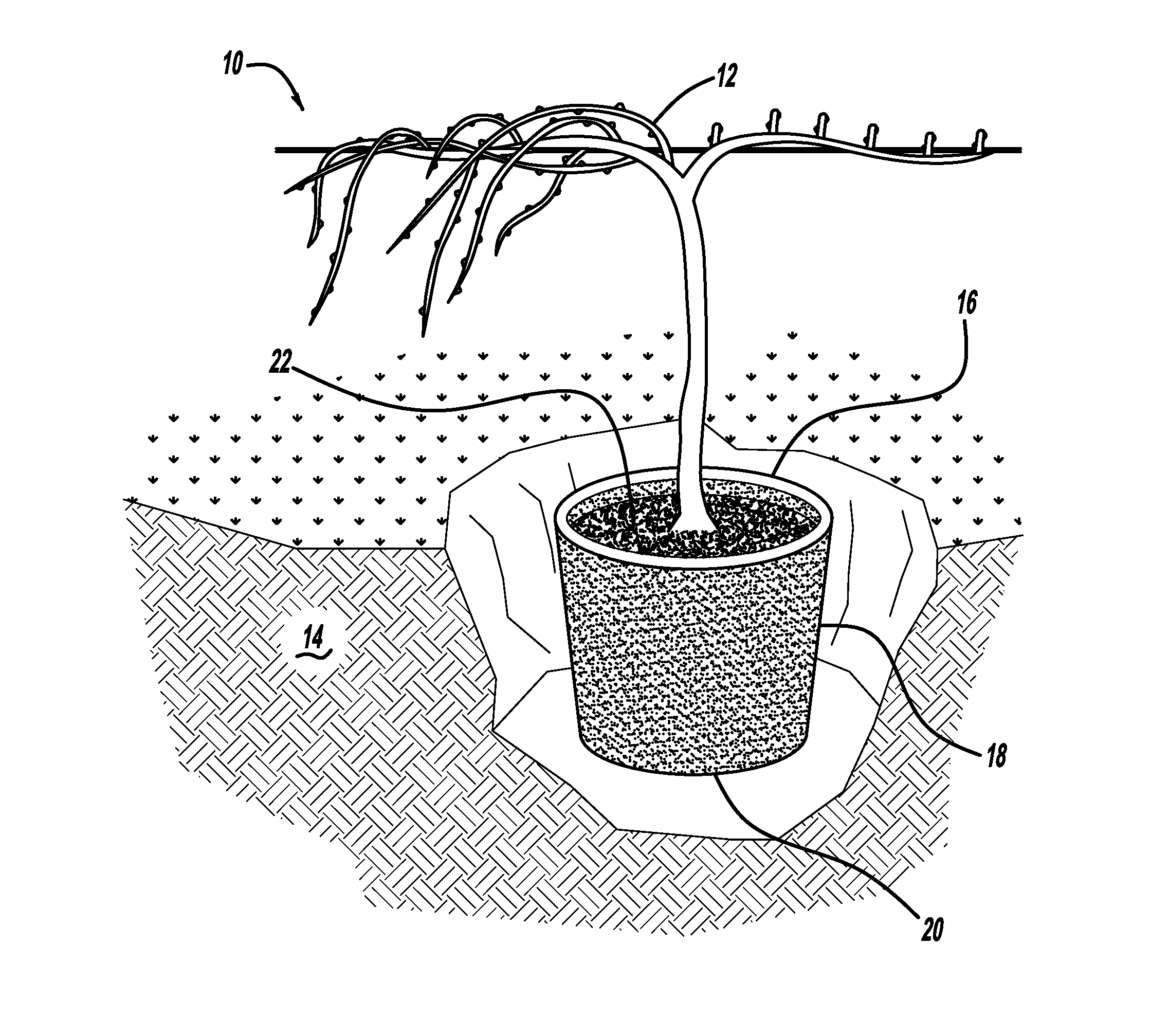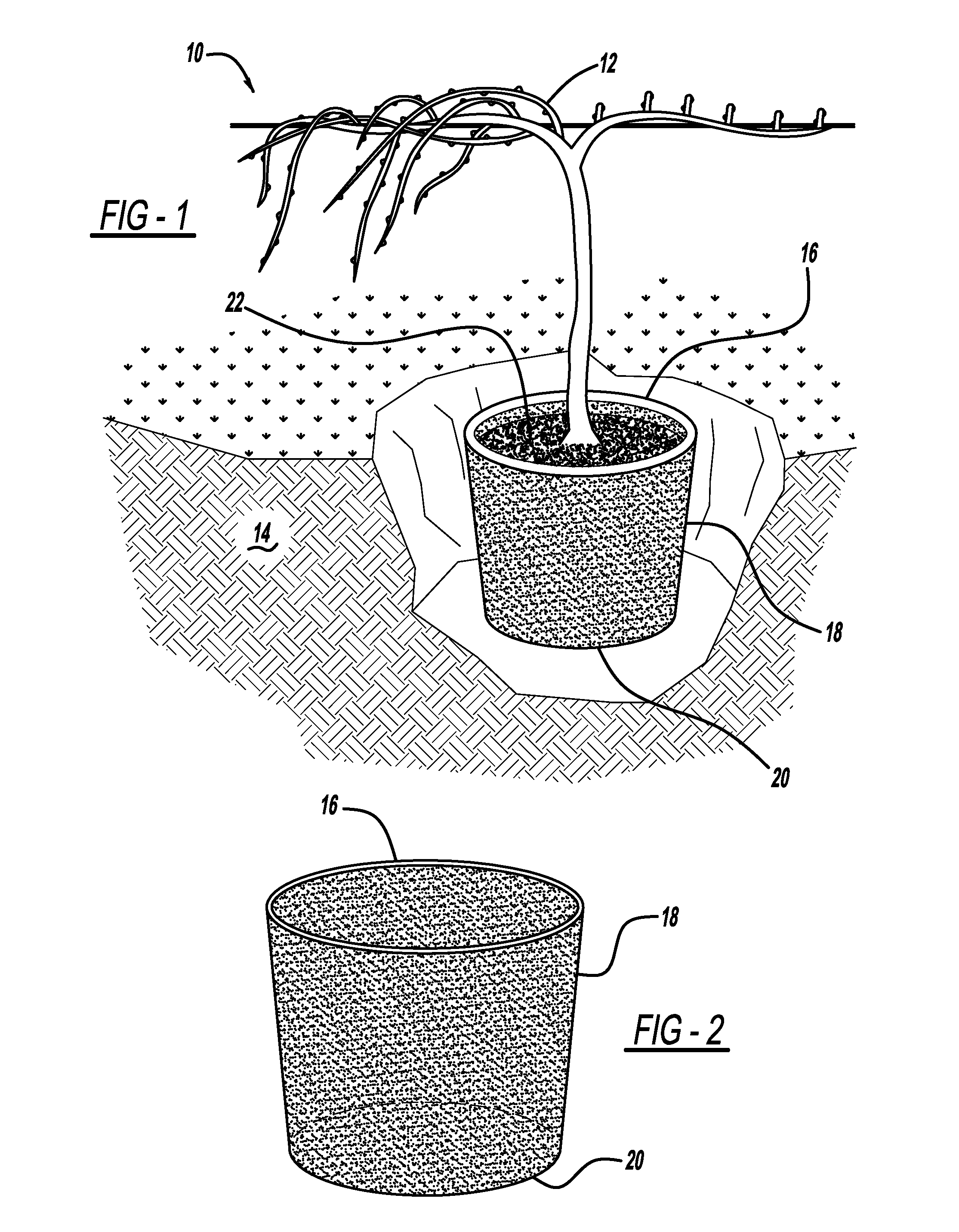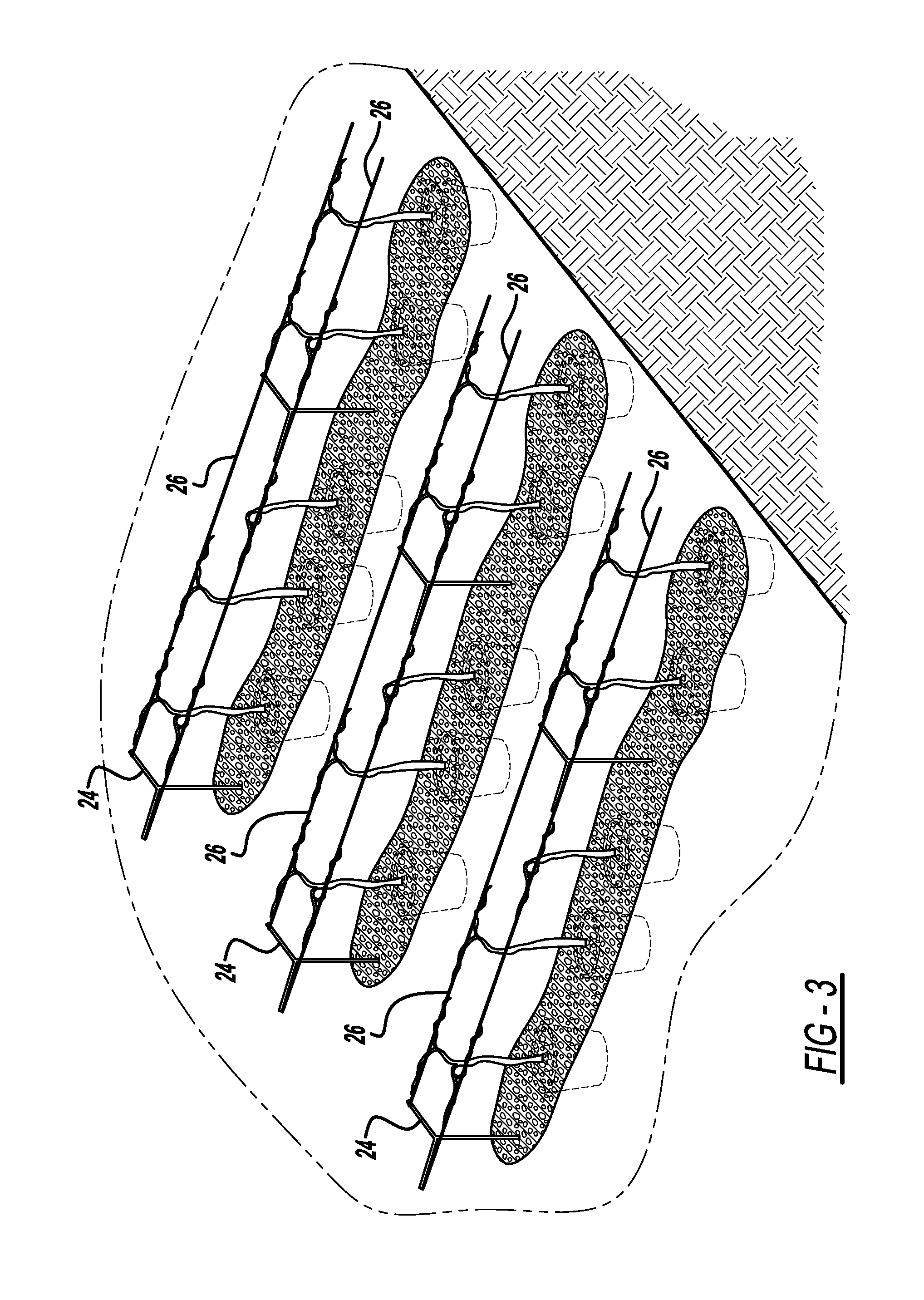Method of Growing Grapevines
a grape vine and vine technology, applied in the field of plant growing methods, can solve the problems of large land area, increase the depth and cost of the final, root penetration and disruption of the integrity of the cap, etc., and achieve the effects of increasing the density of vine planting, ensuring human consumption, and controlling the vigor of the vin
- Summary
- Abstract
- Description
- Claims
- Application Information
AI Technical Summary
Benefits of technology
Problems solved by technology
Method used
Image
Examples
Embodiment Construction
[0022]Referring generally to FIG. 1, the invention is a root control and containment system for controlling and growing a grapevine plant root system in a vessel or container in the cover layer of an existing closed landfill site. In the United Kingdom, government policies regarding the preservation of agricultural land requires most landfill sites to be restored to agriculture (both areable and pasture land). Studies have shown that barley and wheat have been successfully grown with appropriate fertilizer, weed control, and cultivation. However, it is noted that the root structure and such crop is generally no deeper than one and one-half feet deep. In comparison, the root structure of a grapevine can be as much as 12-15 feet. In addition, the physical construction of modern, high mounded landfills provide an optimal area for south facing slopes, cold air drainage, and frost protection, all of which are critical elements in the production of grapes.
[0023]The manipulation of root sy...
PUM
 Login to View More
Login to View More Abstract
Description
Claims
Application Information
 Login to View More
Login to View More - R&D
- Intellectual Property
- Life Sciences
- Materials
- Tech Scout
- Unparalleled Data Quality
- Higher Quality Content
- 60% Fewer Hallucinations
Browse by: Latest US Patents, China's latest patents, Technical Efficacy Thesaurus, Application Domain, Technology Topic, Popular Technical Reports.
© 2025 PatSnap. All rights reserved.Legal|Privacy policy|Modern Slavery Act Transparency Statement|Sitemap|About US| Contact US: help@patsnap.com



